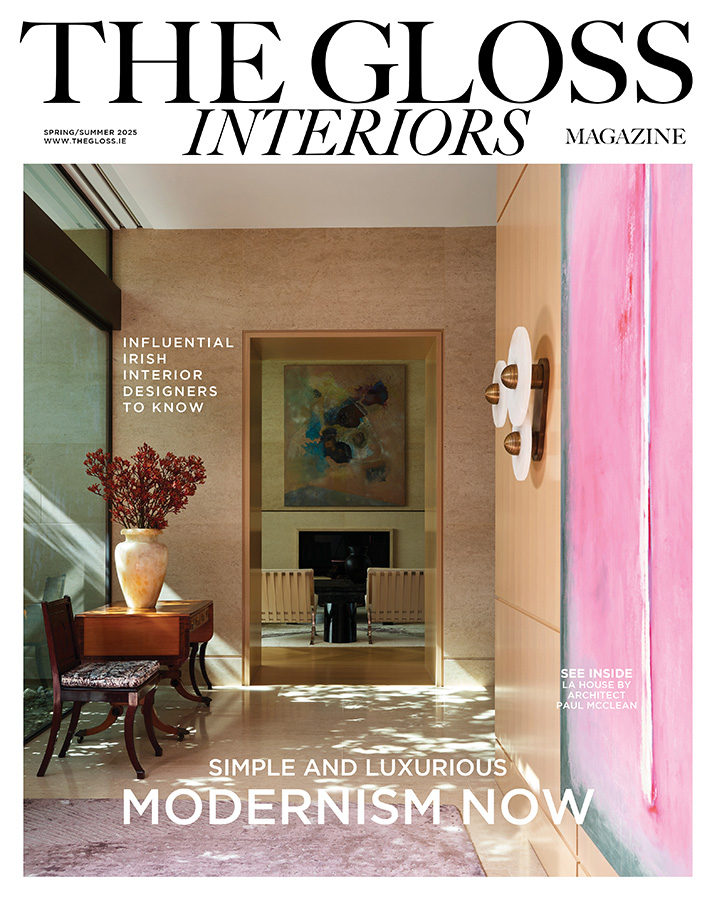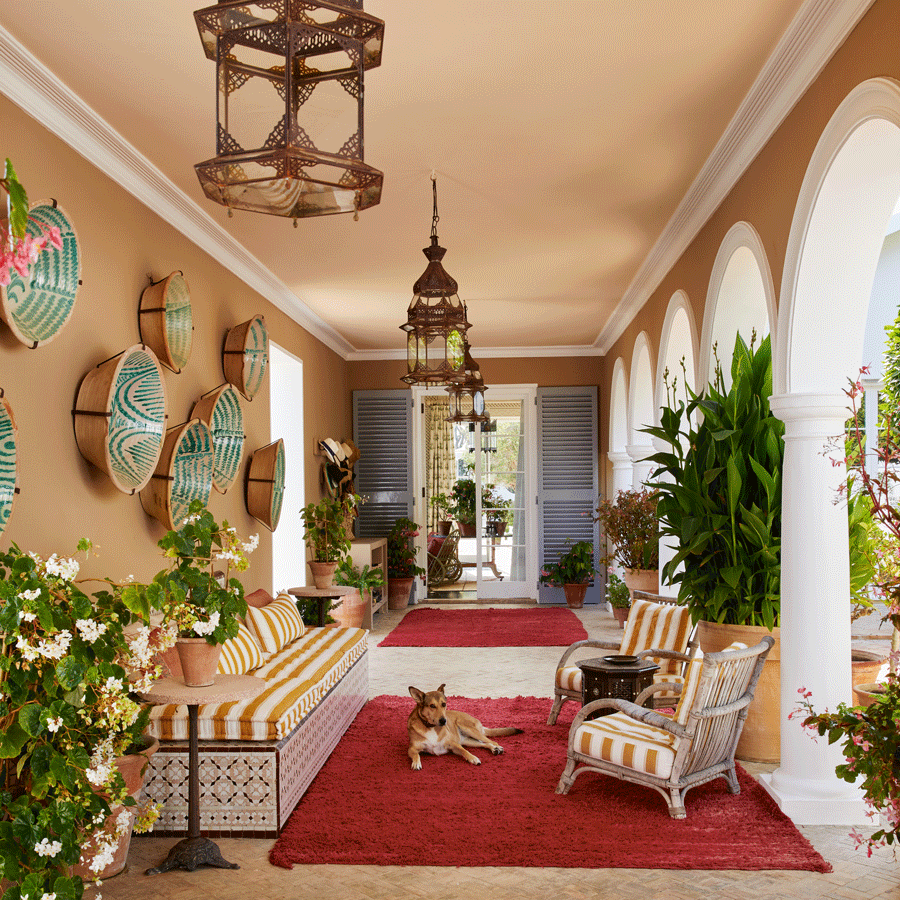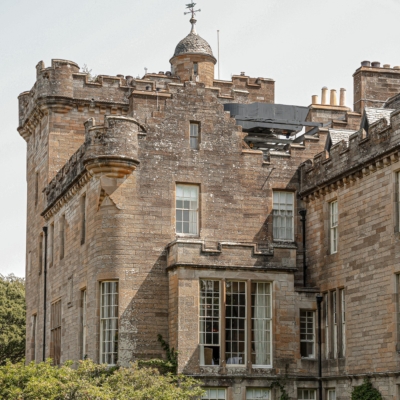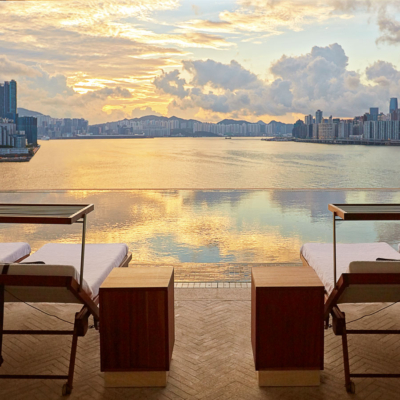In this exclusive extract from his new book, Seeking Beauty, Veere Grenney tells the story of Gazebo, his home in Tangier…
At my home Gazebo in Tangier, I have built a wall in the orchard. About a metre wide and three metres high, it sits at the end of a long brick path that is flanked by slender almond trees, persimmon and bergamot, guava, peach, apple and pomegranate. The wall is made from Moroccan tiles and built by local craftsmen, using a technique called zellige. Around the edge, The Lord’s Prayer is written in Arabic and in the middle, there is a poem by St John of the Cross about the want for beauty. His words speak to me perhaps more profoundly than any others. Here, in the absolute heart of my garden, this poem is an omnipresent reminder that in my lifetime of designing houses I have dreamt beauty, thought beauty and practised beauty. I would like to think that eventually I have become more fluent in beauty and still I’m learning.
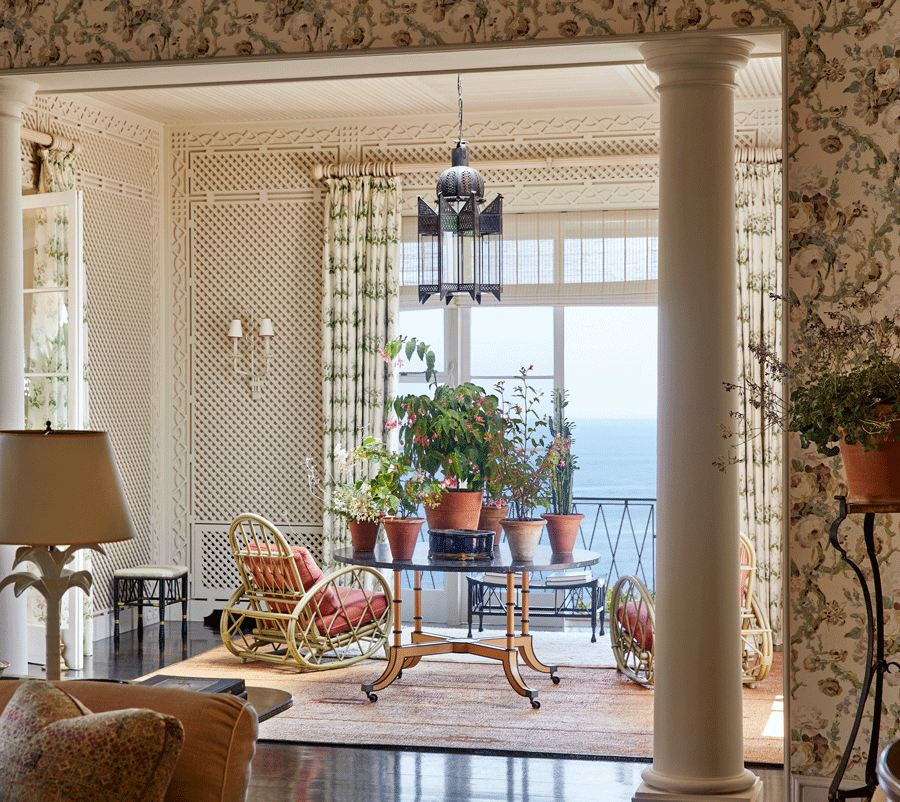
When I think back to my early childhood on South Island, New Zealand, I now see that I have always been driven by the fundamental urge to create order and corral objects into some sort of visual harmony. I didn’t recognise it as such at the time, but even as a very young child, I couldn’t put a cup, a plate, a pencil down on a table without needing to make it look absolutely perfect. That same impulse – the complete desire for beauty – has pervaded every single thing I have done since. It is the force that informs all I do professionally, whether I am designing an apartment in Tel Aviv, a country house in rural England, a beach house in Mustique or a ranch in Wyoming. In my own homes and in the homes of others, I have always looked to create a poetic and deeply pleasing marriage of geometry, comfort, decoration and grace, a marriage that results in a visual accord best described by that one same word, beauty.
How I came to have a home in Tangier can be traced to meeting Mickey Raymond on the beach. He was a decorator for Colefax and Fowler and one of a coterie of British aesthetes who either lived in the city or came there frequently. Mickey took me to a dinner at Villa Léon l’Africain which was hosted by the art historian Richard Timewell. The place was a total revelation, built in 1912 and the most beautiful example of the French colonial style. Timewell had moved here in 1967 after retiring from Sotheby’s and brought with him all the possessions of a life dedicated to beauty. Refined and glamorous, the house was surrounded by a magnificent tropical garden, and inside there was a glorious assembly of English furniture, antique fabrics, local finds and objets d’art. I was in love – with that house, with everything about Tangier, the climate, the parties, pleasure, art, hippydom. I loved the Art Deco French buildings. I adored the beach. Everything was here. I travelled further around Morocco, to Essaouira and back, and keenly remember this time in my life as the most wonderful year of meeting people and of freedom.
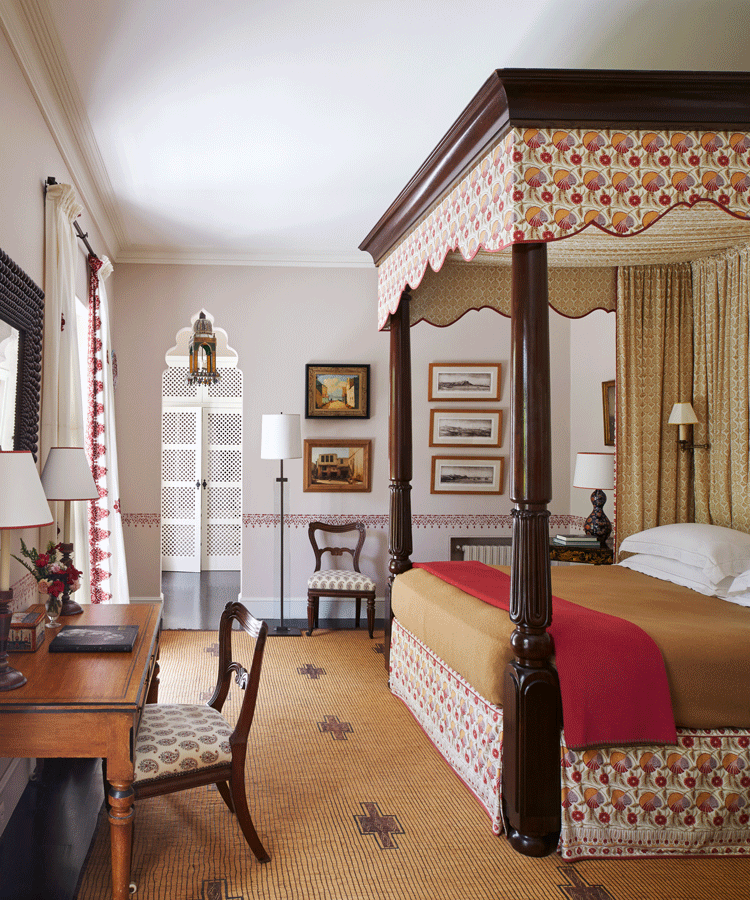
My home – Gazebo in Tangier – I think is the acme of my creative powers and the culmination of a life’s work in the business of understanding, knowing and making beauty. At dawn, at dusk, in the brilliant midday glare of high summer, and in the cooler months of winter, my garden at Gazebo never fails to amaze me. Here is a realm of perfect geometry, subtle detail, flamboyant flourishes of beauty, and sensory delight.
When the opportunity to buy this place arose in 2009, it was the impossibly generous view and the two and a half acres of scrubby jungle on a cliff that immediately tugged at my heart strings. The house was wonderful, modest and charming, but the vista simply takes your breath away. You look down onto a vast unfurling expanse of sea and sky, and beyond to the blurry tip of Spain, Tarifa. This is the Strait of Gibraltar, meeting point of east and west and the only natural link between the Atlantic Ocean and the Mediterranean Sea. From the Egyptians to the Phoenicians to the Mesopotamians, every boat that has ever sailed the Mediterranean would have passed this point. In 1607, you could have seen the Battle of Gibraltar. And in 1805 you would have spotted smoke from the Battle of Trafalgar. Not only is the aspect here extraordinary, but the shape of the plot is an anomaly, being horizontal, not flanked by buildings either side.
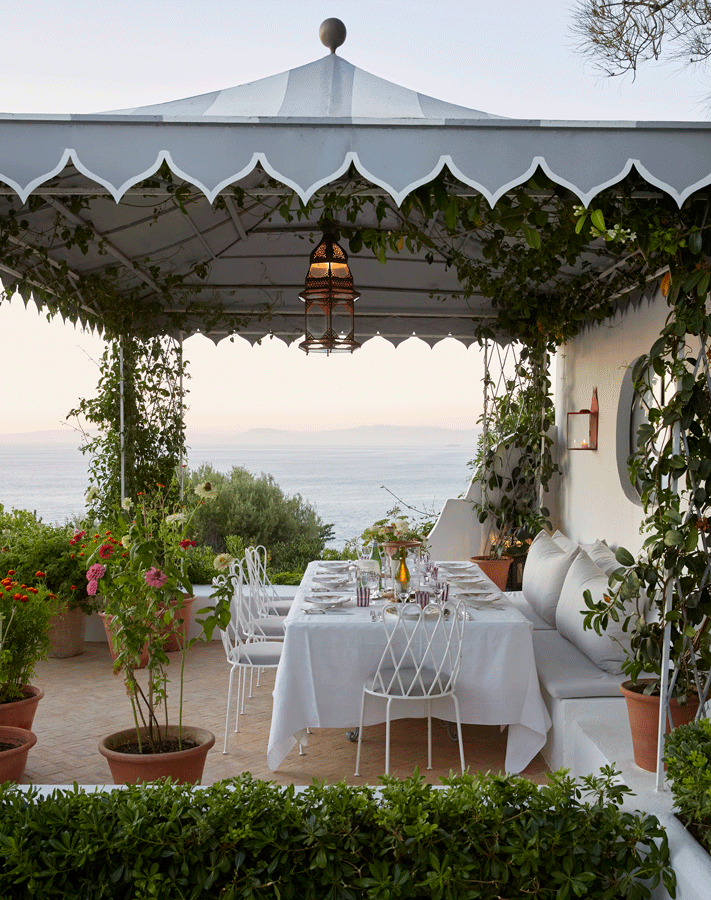
I had never even imagined that I would own or create a garden in Tangier. But when I did secure it, I realised that there were so many parallels with the place I grew up, Auckland. Everything that grows in New Zealand thrives here in Morocco. And like Auckland, Tangier is a city on the sea. Gazebo sits at the top of the Old Mountain, and Auckland too has many mountains, meaning you can always see the sea from wherever you are. Some of my most-loved trees and flowers from my childhood grow here: canna lilies, tibouchina with its glorious purple flowers, datura, palms and roses.
Still, in 2009, the garden was just a tangle of undergrowth, laurel, eucalyptus and pittosporum trees, subsisting in depleted soil that was mostly clay. Several overgrown paths remained from the 1930s, and miraculously, there were three natural springs on the place. At this early stage, I needed an informing vision and began discussions with an old friend, the Italian writer and aesthete, Umberto Pasti. I was putting in retaining walls to support the upper sections of the house, and both practically and intuitively it became clear that terraces would be key, the most elegant and sympathetic solution to my garden-on-a-cliff. Different levels would allow distinct zones of beauty, places to be and to pause and absorb the view. At the heart of all, I decided to create an enormous walkway that would function as an avenue; it would form an extended vista through the centre of the garden that could be softened and broken in places by planting. At one end would be a classically Moroccan mosaic bench for sitting and reflection; at the other would be the entrance to the palm-tree glade. And right in the middle of the walk would be a rectangular pond, with dark waters and lily pads, framed by silver-leaved olive trees. I was confident that, once it was in place, everything else would coalesce around this central walk.
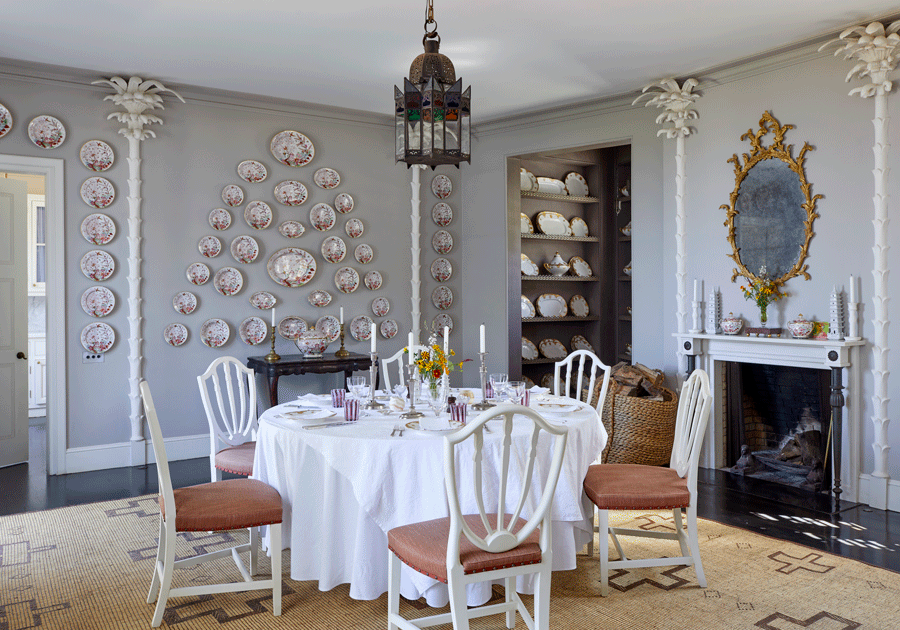
I had met Cosimo Sesti – he was Christopher Gibbs’s godson and had planned Christopher’s houses. Cosimo helped me design the walls and the principal staircases leading down into the garden. It is crucial to have a flight of stairs that you can walk easily – and beautifully – up and down. To achieve this, we made every step exactly the same dimension and created platforms where you can stop and look around. The curving shape of the twin staircase adds a formal and glamorous quality, and at the same time mitigates the straight lines of the paths below. Now a wall of plumbago has ballooned up over the iron banister, its wild profusion of luminous blue flowers adding softness and romance.
In this way, the construction of Gazebo and its garden were completely interlinked; the foundations of the house enable the five terraced areas of the garden.
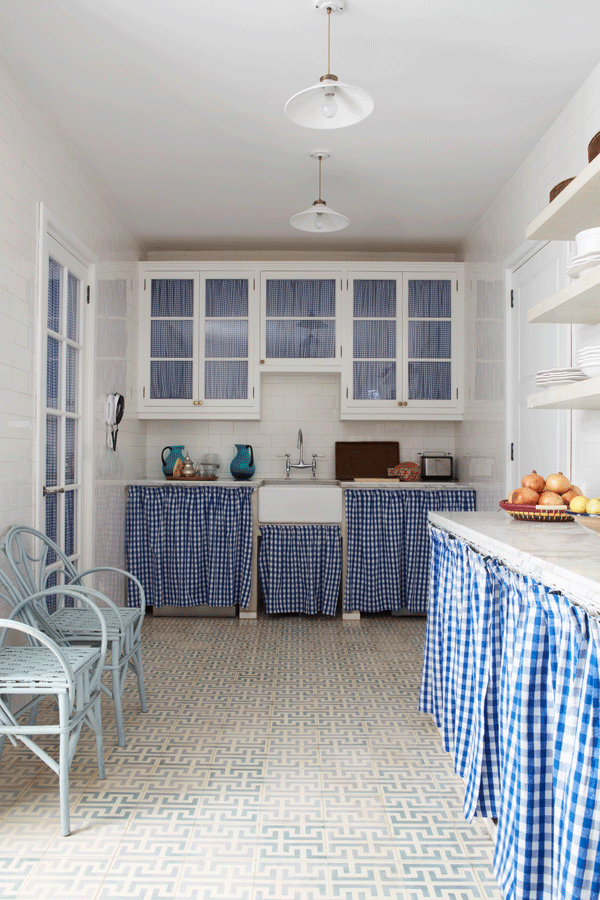
Indoors and out are in constant communication, sharing visual motifs and principles that reverberate back and forth between the two spaces. The curve of the elliptical hallway is echoed by the outdoor staircase, the huge semi circle of canna lilies and the crescent shaped glasshouse. The central axis of the house – from hallway, through the colonnade and treillage room, to the dining pavilion – is mirrored by the Long Walk that travels the length of the garden. The planting in the garden is sublime, overseen by my great friend the brilliant plantsman Christopher Masson. His work and cleverness are manifest in all areas of the garden at Gazebo. Together, we have worked closely on every decision, but Christopher’s knowledge is paramount and he is responsible for a huge part of the beauty of the place. A perfect example are the twelve olive trees rising up out of an ocean of agapanthus and offset by an undulating teucrium hedge below that forms a classic line of beauty. The decorous formality of the internal courtyard with its eight orange trees and the play of the fountain is loosely expanded on by the pond and the orchard full of grapefruit, bergamot, lime and kumquat, as well as persimmon, guava, quince, peach, apple and almond. Finally, the dining gazebo on the top terrace is repeated in a second, twin, gazebo below the orchard at the very bottom of the garden. This serves to contain the view; it is a last note of the decorative and the formal, a pale, ornate roof rising out of the trees.
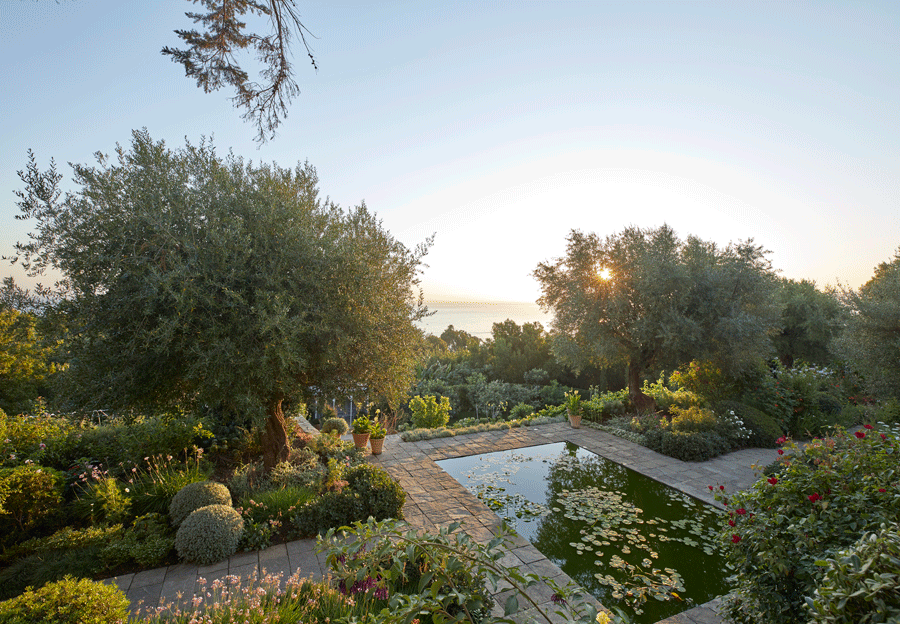
The swimming pool presented a challenge to me. Generally, I hate looking at swimming pools, great turquoise monsters that they so often are. The solution here was to hide the pool, to turn it into a destination, happened upon by chance. So, I decided to build it in a palm-tree glade, at the very end of the Long Walk, to lend it a quality of secrecy and enchantment. The pool itself is raised, a rectangle of lucid green against the pinkish terracotta paths. Above the water soar giant palms, silhouetted against the sky as if in homage to Hollywood or the Hotel Bel-Air. In a note of high camp, twin bronze cobras, originally from the Pimlico Road, are positioned theatrically at the head of the pool, spouting water. At the other end is a domed building in miniature over the well that draws your eye as you are swimming. A rill flows from the pool into ponds below. Pots of papery white cosmos wave gently on either side of the water, and beyond these, creamy hollyhocks branch out at eccentric angles. But the greater part of the planting here consists of wildly verdant tropicana, strelitzias, tractor seat plants, and the Fern Walk, where ferns giant and diminutive droop over the path.
Christopher Masson also ensured that one of the great pleasures of the garden at Gazebo is that it keeps on giving throughout the seasons: the clivia garden comes out in March, the wall of white datura blossoms right through to October and the dry area, full of succulents, blooms in winter. I propagate cuttings and grow plants from seed year-round in the polytunnel and cultivate carnations and pelargoniums in the curved glasshouse in shades of fuchsia, palest pink, magenta and blood red. Pelargoniums link me to my childhood and to my home in Suffolk, The Temple, where they are placed all around the house, modest and florid, always charming. Initially I had planned to make the greenhouse a spot for outdoor dining; I loved the idea of a circular structure and built this glass semi-circle complete with curved bench.
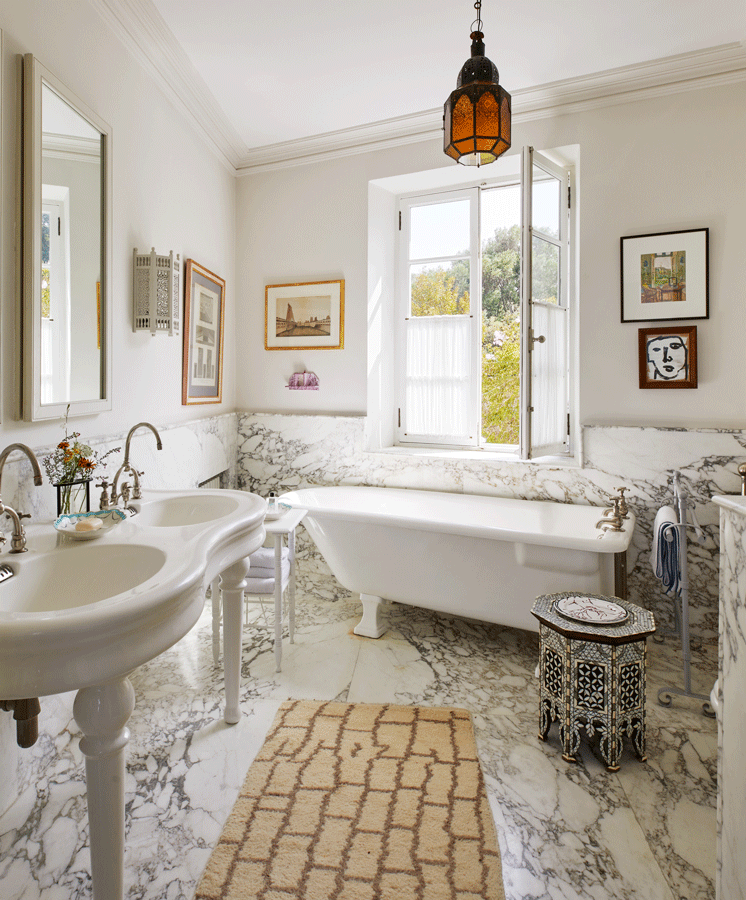

When I finally moved into Gazebo, I realised there was nowhere to eat outside that was adequately sheltered. Any outside dining area needs to be covered because there is so much dew in the morning and evening. So I designed the top gazebo with Cosimo Sesti as a dining pavilion, and it is used all the time. When you sit here, the position, the view and the light all come into perfect alignment. There is always a breeze and you can watch the light move across the water and the sea change day to day and hour to hour, swiftly shifting from violet to indigo to a silvery pearl at dusk. Hard to believe that here, at the apex of Africa, a slope of scrubby cliff has, with the help of the most talented and tireless team of local gardeners, metamorphosed into paradise in just six years. Forms and colours, infinite shades of green, have been brought into dynamic harmony by a grid of planting, paths, walls and water. From fountain to rill to pond to pool to the great sweep of sea itself, my garden at Gazebo brokers the transition from order, art and cultivation to the wild and unadulterated ocean beyond.
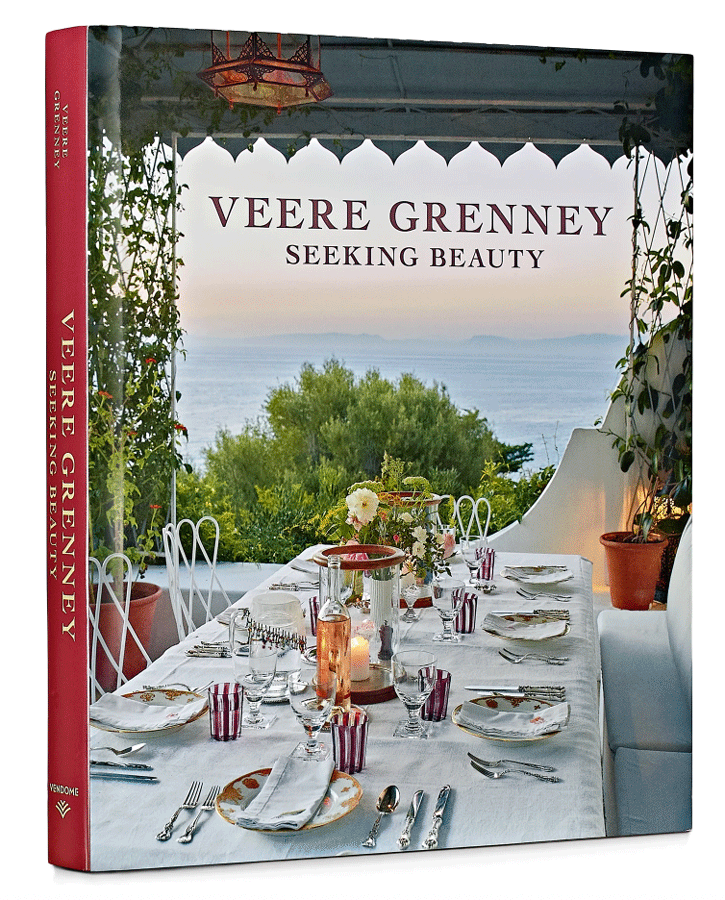
From: Veere Grenney: Seeking Beauty, published by Vendome Press, is out now, €76; @veere_grenney. Photography by Francesco Lagnese.



